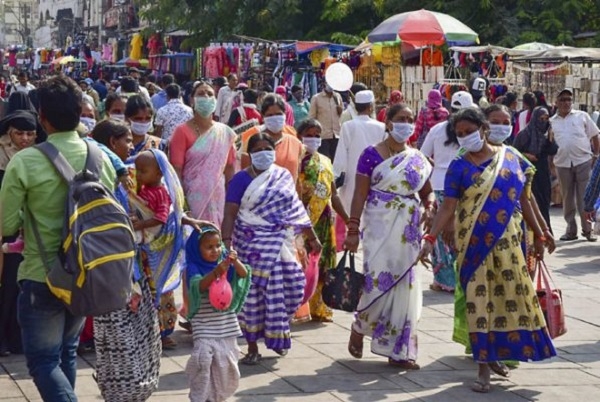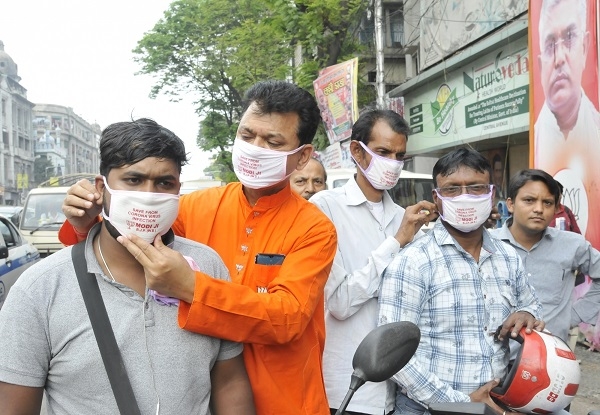COVID-19; Who should wear mask? Should it be N95? Wait, what's N95 mask? All here in deets -
Total Views |
-Shivani Shinde
Since India has reported a few positive cases of the novel corona virus, people are madly rushing to the medical stores to buy face masks and hand sanitizers. Following this, the demand for protective masks and sanitizers have gone up significantly and also the prices have elevated irrationally. While most of the people are seen spending unreasonable on veils, it seems that people are heedless to know actually who should wear the mask? Which type of mask will protect them from the epidemic? Well, here is a folio explaning the mask details for the mass community amid the ongoing COVID-19 chaos in India :

Who should wear the mask?
Amidst the mad rush across the country to buy the masks, the Ministry of Health on Tuesday issued an advisory noting that only those people who are catering to the symptoms of fever, cough, difficulty in breathing and alike, are the only one to wear masks. 'Everyone need not wear masks', it said, also adding that persons attending to patients with respiratory problems should definitely wear masks.
Everyone need not wear a mask.
— Ministry of Health (@MoHFW_INDIA) March 17, 2020
Know, when and how to wear a mask!#COVID19 #IndiaFightsCorona #CoronaOutbreak #HealthForAll #SwasthaBharat pic.twitter.com/FPqTHOZBdH
What is the proper way to wear a mask?
The advisory has also explained how you should wear a mask to protect yourself from coronavirus infection:
1. Unfold the pleats of the mask, it’s important to ensure they are facing down.
2. Place the mask on your face to cover nose, mouth and chin completely and ensure that there are no gaps on any side.
3. Change the mask every six hours or once it is wet. Hold the mask by the strings and avoid touching the mask while wearing.
3. Don’t touch the exterior of the mask as they have risk of contamination.
4. Don't leave the mask hanging from the neck.
5. Never reuse disposable masks and make sure that the used mask is dumped in a closed bin.
6. Always wash your hands with soap and water or sanitiser when you remove your mask.

N95 masks :
Further, with the increased demands for N95 masks, its important to note what they do and how they function! There are two main types of masks, 'surgical' masks and 'respirators'. They have different functions, standards, and objectives. Surgical masks only protect against infectious agents that can be transmitted via 'droplets', while protective masks or respirators also protect against the inhalation of infectious agents that can be transmitted by 'airborne' routes.
Lots of questions about masks. Here is the difference between a surgical mask and a N95 respirator. Neither are necessary for healthy people unless you are a healthcare worker. #coronavirus @cnn pic.twitter.com/VLf38nU83x
— Dr. Sanjay Gupta (@drsanjaygupta) March 1, 2020
N95 respirators filter out of most airborne particles, preventing the users from breathing in particle down to 0.3 microns in diameter. These types of masks are often used when air quality is poor due to wildfire smoke or pollution. N95 respirators block out at least 95% of small airborne particles. According to WHO scientists coronavirus itself measures between 0.5 to .0.2 microns in diameter; The respirators can filter out some droplets carrying COVID-19 virus.
Meanwhile, surgical masks are designed to keep droplets splatter passing from a person's mouth to nearby surfaces or people, they are primarily meant as a physical barrier to keep healthcare providers or sick people from spreading their mouth-borne germs.
Who need to wear N95?
A surgical N95 (also referred to as a medical respirator) is recommended only for use by healthcare personnel (HCP) who need protection from both airborne and fluid hazards (e.g., splashes, sprays). These respirators are usually not in need beyond healthcare. Also, there is a unique surgical method for wearing an N95 mask. Therefore, it is not suitable for ordinary people to use this mask. Instead of using the N95 masks people may use the surgical mask as they are more efficient to prevent the virus.

